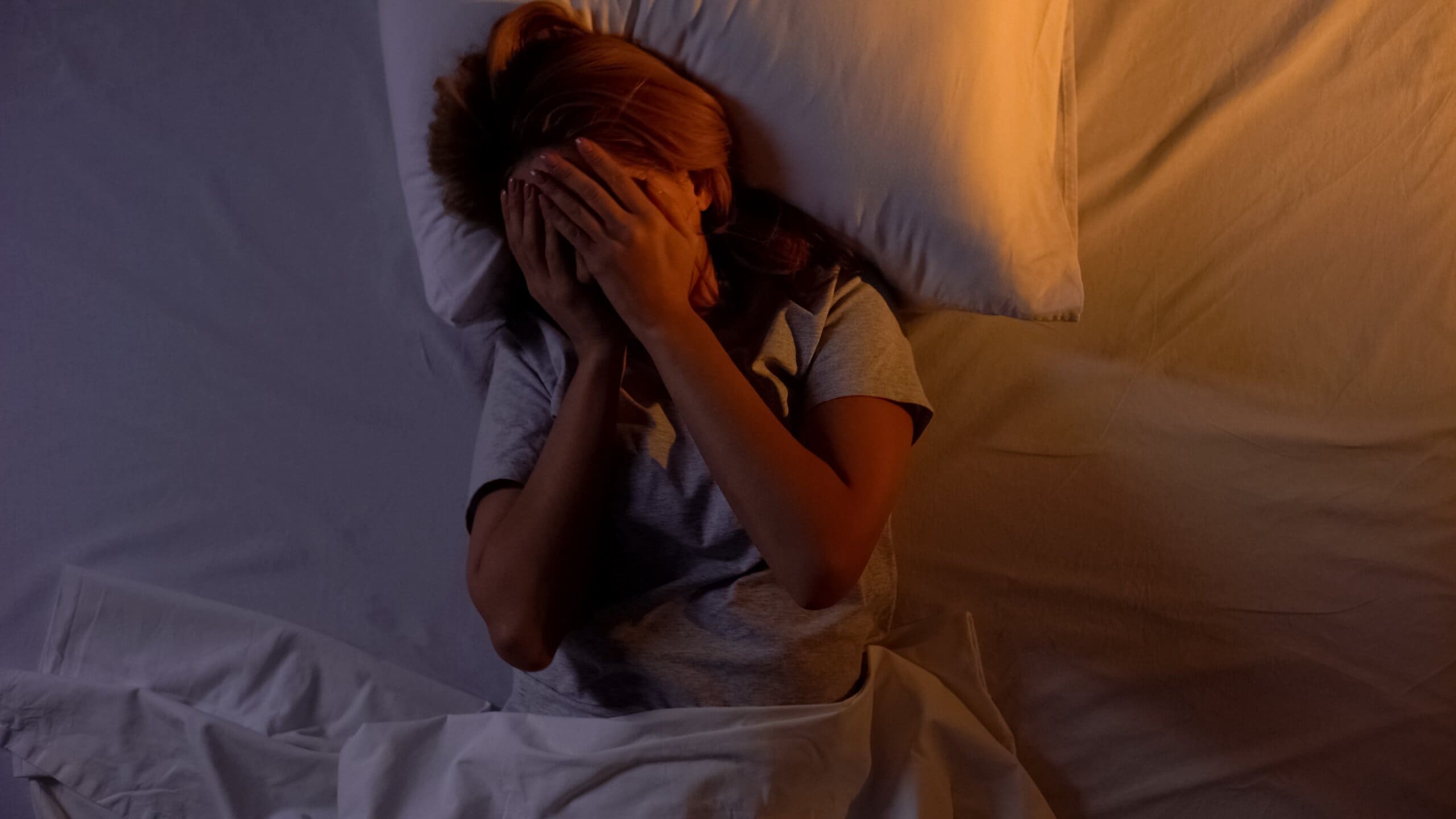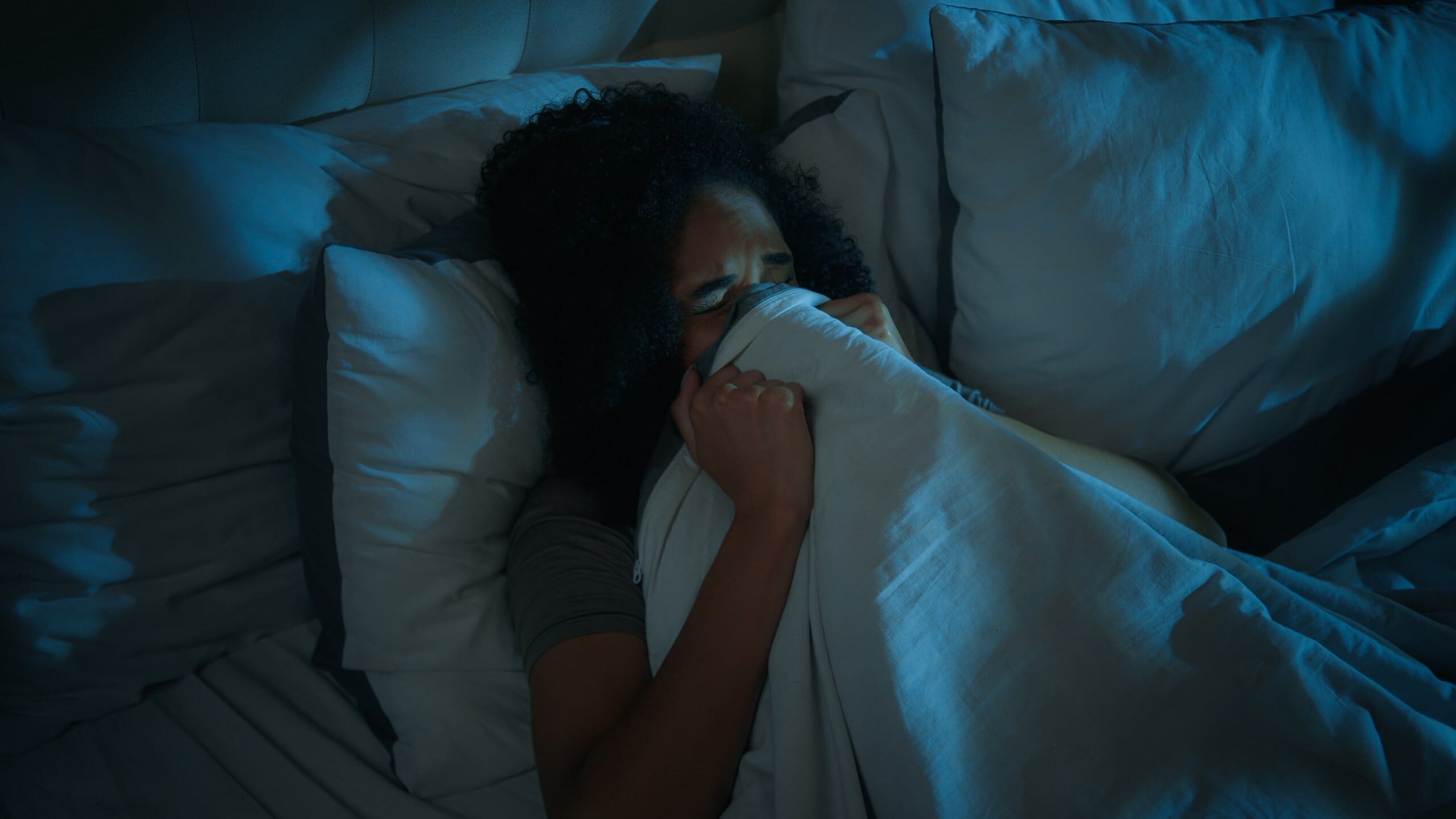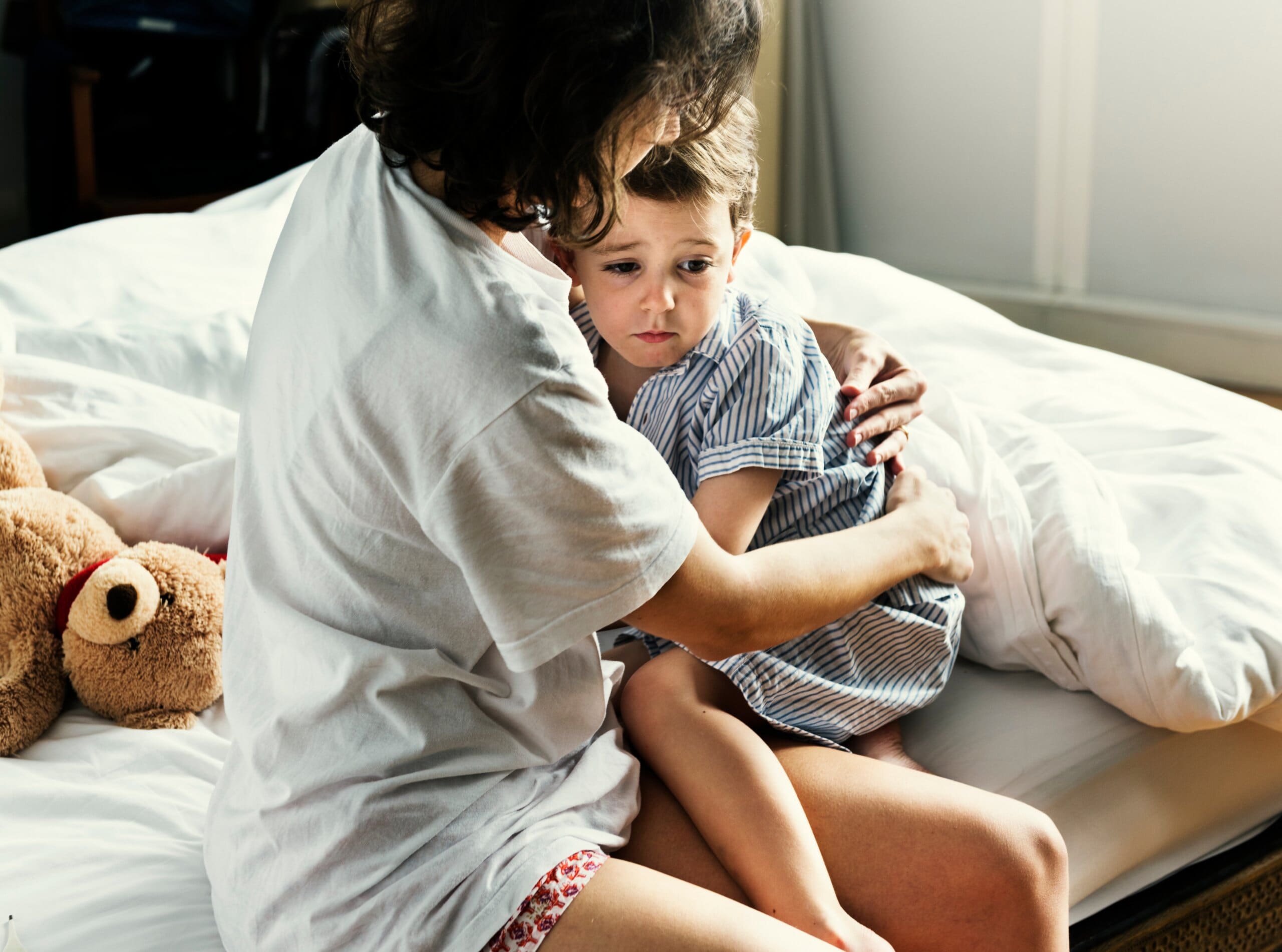Waking up shaking and sweating from a night terror can be a horrible experience that some of us go through, and it can be especially scary for a child. Your first line of defence against night terrors will always be knowing more about them, so you know exactly why they’re happening and how to deal with them effectively.
In this article, we'll explain the difference between a night terror and a nightmare and explain in more depth what a night terror is and why it happens. We'll also provide some tips on how to deal with night terrors, so you or your child can finally get a better night's sleep!

What are night terrors?
Night terrors are a type of parasomnia (an undesirable event during sleeping) that happens to you during one of the NREM stages of your sleep cycle, which involves physical signs of fear while the person is asleep. They're also different to Sleep Paralysis, which leaves you feeling half awake, half asleep.
Night terrors are more likely to affect children rather than adults, but adults can experience them too, and most children outgrow their night terrors by the time they become teenagers.
They can be related to other sleep disorders, such as sleepwalking or sleep anxiety – our guide to what sleep anxiety is and how to manage it has some helpful tips on how to look after your mental health to help potentially curb night terrors. They can sometimes require treatment if they pose a risk to your safety, or you struggle to get enough sleep because of them.
Night terror vs nightmare
Night terrors differ from nightmares in several ways:
- Night terrors mainly affect children, while nightmares affect both children and adults.
- Night terrors involve more violent physical symptoms, such as thrashing, shouting, screaming, and opening your eyes but are unable to be awakened, while nightmares tend to involve less movement.
- Many children and adults don’t remember that they’ve experienced a night terror, while nightmares are more memorable.
- Nightmares will happen later in the night during REM sleep, while night terrors happen earlier in the night during the third stage of the sleep cycle in NREM sleep.
Symptoms of night terrors
Symptoms of night terrors will vary from person to person, but they can include:
- Frightened screaming or shouting
- Kicking and thrashing
- Sitting up in bed and appearing frightened or staring wide-eyed
- Sweating, breathing heavily, and having a racing pulse, flushed face, and dilated pupils
- Hard to wake up, and confused if awakened
- Having no or little memory of the event the next morning
- Possibly, getting out of bed and running around the house or having aggressive behaviour if stopped
What causes night terrors?
Night terrors can be caused by several different factors:
- Being extremely tired or unwell
- Being stressed, anxious, or frightened by something you witnessed
- Taking medications like antidepressants
- Mental health conditions such as PTSD (post-traumatic stress disorder)
- Brain conditions such as dementia
- Sudden loud noises or a need to relieve yourself during deep sleep

How long do night terrors last?
Night terrors usually happen around 3 hours after a child has fallen asleep when they are in the third stage of NREM sleep. The fight or flight area of their brain kicks in if they are partly awakened during this time, leading to overexcited brain activity that causes night terrors.
These episodes tend to last for around 10 minutes but can last up to 40 minutes for some people. There can also sometimes be multiple episodes in one night and can either happen rarely or as often as once or twice a month.
How to deal with night terrors for children
If your child is experiencing night terrors, you may feel better knowing that they often go away on their own. However, it can be very distressing to see your child so frightened and feeling unable to help them, so there are things you can do to try to reduce the instances of night terrors occurring, such as:
- Make sure that they have a calming bedtime routine, with no screens and gentle lighting.
- Keep a sleep diary, either written by them or you. This includes things like what they ate during the day, the activities they did, and how they were feeling.
- Helping them to cope with anything that is causing them distress or anxiety.
While these things may help to reduce the instances of night terrors, when one is occurring, there are some steps you can take to help ease the situation:
- Stay calm and wait for them to calm down
- Don’t try to move them unless they are at risk of harming themselves or others
- Don’t try to wake them up as this could upset them more if they fail to recognise you
- The NHS recommendation for night terrors is that if they have a night terror at the same time each night, try waking them up gently 15 minutes before that time to help curb the night terrors

How to deal with night terrors for adults
Night terrors only occur in around 2% of the adult population, so seeking medical advice is always the first place to begin. You can work with a sleep specialist or mental health expert to establish where your night terrors are coming from. As sleep conditions can often be inherited genetically, it can also be worth asking your genetic parents if they have also experienced any sleep disorders. The best ways to help an adult deal with night terrors are similar to those for children:
- Keep a sleep diary to help you establish any disruptive patterns
- Don’t try to wake up an adult having a night terror, as they become violent if they cannot recognise you
- Don’t try to restrain them unless they are a threat to themselves or others in your household
- Encourage them create a healthy sleep routine - our Ultimate Bedtime Routine can help
Understanding night terrors can help ease your concerns about your loved one and help you get a good night’s sleep yourself. We answer questions about lots of different sleep disorders and how to improve your sleep health in our Health and Lifestyle guides.
You may also find that upgrading your bed can help greatly with improving the quality of your sleep, so browse our website to find the ideal sleep set-up for you.









